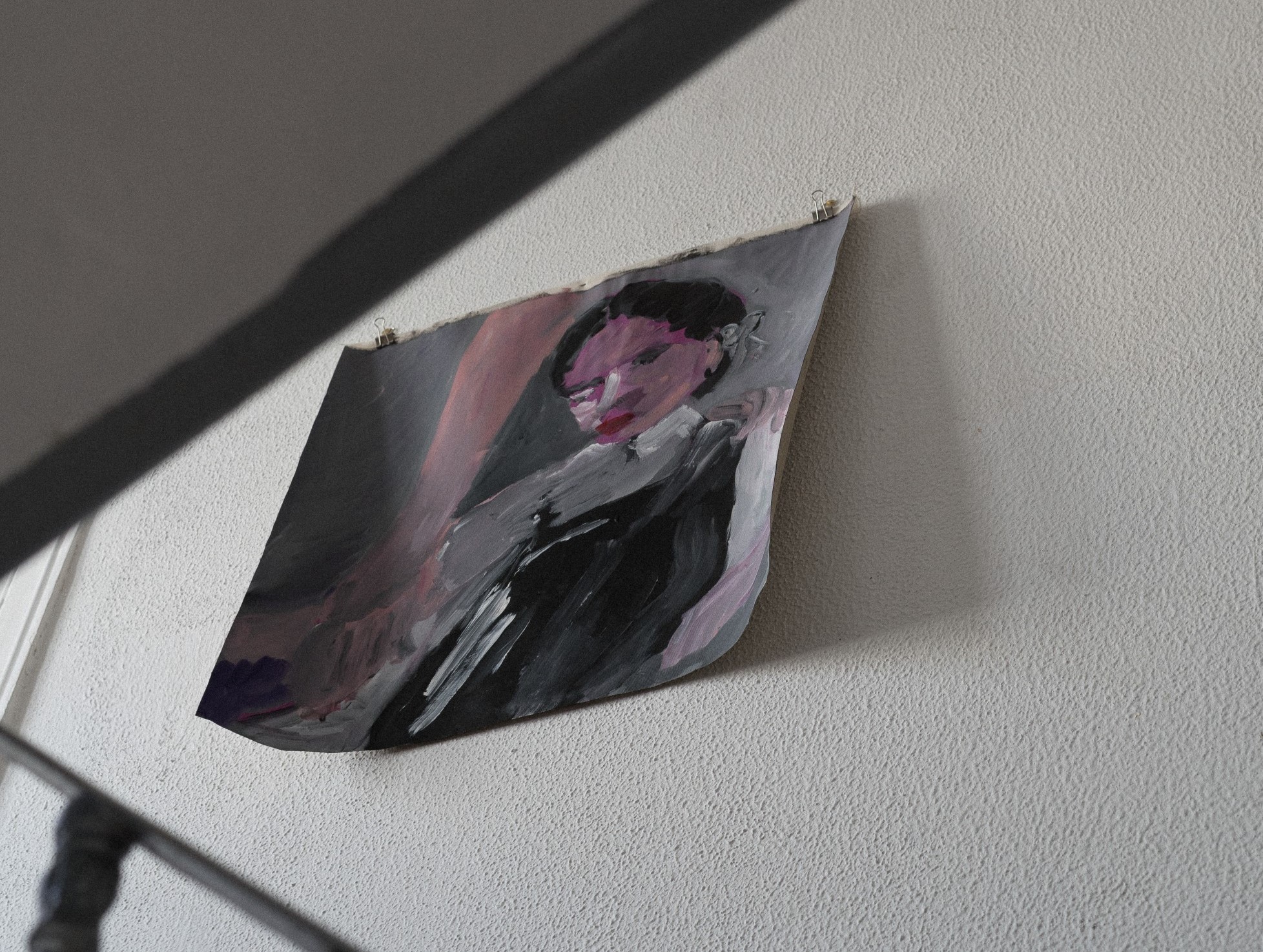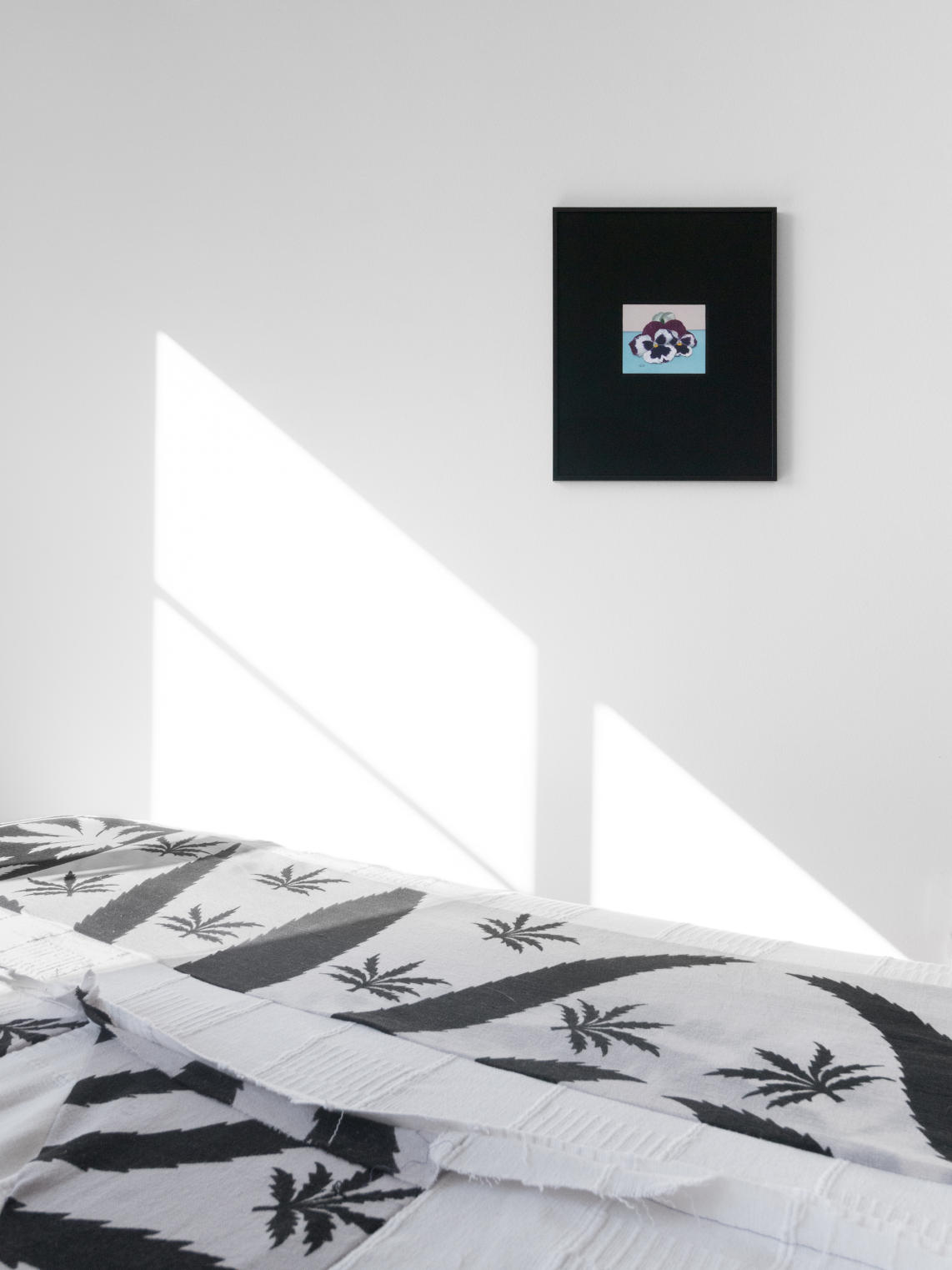article
The Condominium and other forms
"Experimental: Ups and Downs" is an exhibition by Débora Mergulhão Bastos installed in the common areas of the building where she lives, in Lisbon.
Among loved ones, we talk about how great it would be to live in the same building so that we could, without much effort or schedule, have a drink at an unusual time. If I lived in the same building as my friends, I would leave messages for them under the door, I would bring extra strawberries from the market to later distribute to each apartment. I even imagine a little sofa in the entrance hall, under the mailboxes, photos on the stairs and mints in a bowl with a silver rim. Post-its and more post-its with short, funny, motivational, romantic phrases, for Monday, Friday and Sunday, the days of the week that deserve special messages.
Experimental: Ups and Downs is an exhibition by Débora Mergulhão Bastos installed in the common areas of the building where she lives, in Lisbon. When I arrived at Rua Maria Pia, I immediately guessed which building it was, as if the concrete building, painted pink, was also happy and pompous due to the event it was hosting, and this accentuated its aura of joyful event, to which no one is indifferent. The building feels seen by desire and this makes it shine a little more than any other on that enormous street.
The moment I learned that Débora was thinking about an exhibition for the staircase and hall of her building, some mental images came to mind, connections with projects such as Jan Hoet’s Chambres d’Amis in 1986, which installed 51 works of art in 58 private homes in Ghent, Belgium, or The Kitchen, Hans-Ulrich Obrist’s first exhibition, in the kitchen of his apartment in Switzerland in 1991. These are exhibition proposals in which the solution to the constraint offers the very form of the exhibition - a kitchen, a bedroom, a garage or, in this case, the condominium of a residential building. If, on the one hand, I make logical associations with international peers, from my whole life, but still interlocutors of a history of contemporary art, on the other hand, I know that Débora and her paintings are come together with closer allegories, which come to us from the depths of everyday life, and not necessarily from the heart of the archive.
The title announces, as jocularly as it is honest, an experimental period of Painting, with all that it entails, including its ups and downs. These paintings crystallize emotions with which we have struggled to work out: there is anxiety, there is fear, there is obsession. But they also save us with the information that feeling them is the way to conceive of explosive, undisciplined love and chances for an abundant future. Although we believe in this cause-and-effect relationship, this logic continues to feel meritocratic, because it is based on a moralistic foundation: that one is deserving of good after proving the effort of fighting evil. Perhaps the possible answer is a collective self-determination that radically exposes and incorporates what shames, hurts, and suppresses—the sudden holes in the tarmac, the infestations, and the mold on the walls—without expecting anything in return. And that, in time, stabilizes, and fills our faces with kisses. The kisses of angels. Because angels are always dying to kiss us, always wanting to fill our faces with kisses. How nice, the kisses of angels.
On Almirante Reis, one of the city's avenues, the sign on the door of a new hotel reads:
- Deseja o Futuro. (Wishes for the Future.)
To which I reply:
- May the Wish watch over us.
If the Wish watches us carefully, if the Wish can follow our movements, the repeated daily gestures, the ups and downs, the going on, if the Wish can see us going on, then, if so, the Future will be wished. Creating images is exposing what is reproduced under the light of the Wish, a place of responsibility in the construction of spaces of privilege and power in the distribution of sensitive capital. The painting sanctifies this feeling, and whoever receives it enjoys the commitment of their spirit and the person who painted it. Everyday life becomes desired when its constancy is called into question. A warm breeze is enough to make us think of the thoughtfulness of encounters in the entrance hall, in the building of friends, at four in the afternoon, like during summer, when that meeting point is where life began.
BIOGRAPHY
Filipa da Rocha Nunes is a writer and curator, author of the book "couro fresco", published in April 2023. She completed her Bachelor’s degree in Painting at FBAUL (Lisbon) in 2016 and earned a Master's degree in Cultural Management from UIC (Barcelona), having completed the program in 2019. Currently, she serves as the Art and Culture Coordinator at the Luso-American Foundation for Development - FLAD. Additionally, she is a Co-founder and curator of the visual research project "O STAND" based in Lisbon, the city she has called home since 2020.
ADVERTISING
Previous
article

26 Jun 2025
The new Julião Sarmento Pavilion
By Maria Brás Ferreira
Next
article

30 Jun 2025
Douro: Geografia Líquida, at Expo Osaka 2025
By Maria Inês Mendes
Related Posts

